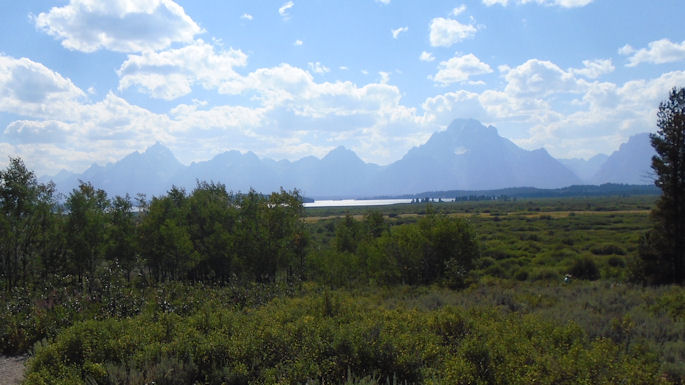
This is one of the most beautiful parks. We didn’t come at the very best time of day, since I had to take pictures into the sunlight induced haze. Morning with the sun at my back would have been better. But still very nice.
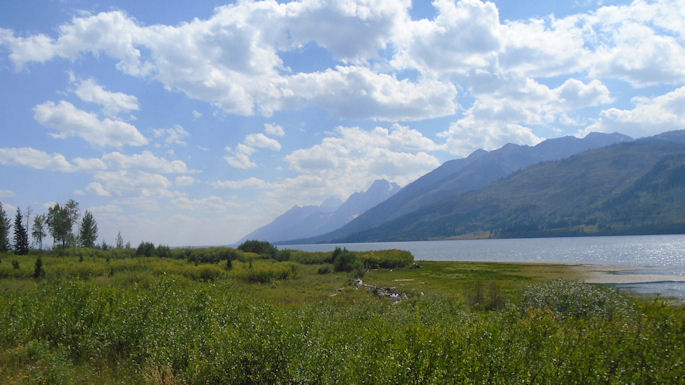

John Matel's Memorial Blog

This is one of the most beautiful parks. We didn’t come at the very best time of day, since I had to take pictures into the sunlight induced haze. Morning with the sun at my back would have been better. But still very nice.

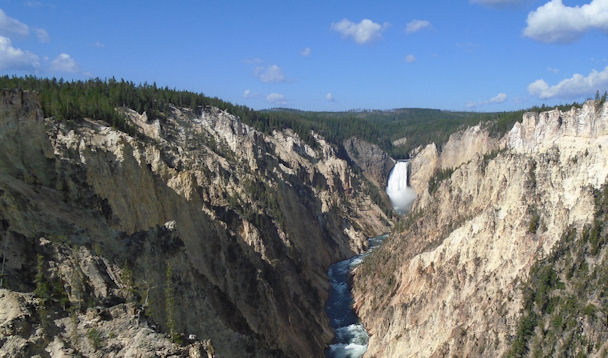
There are two important things to keep in mind about the pictures. First is that they do not do justice to the beauty and they of course cannot convey the sounds or the feelings in the air. The second thing is more positive. When taking the pictures, you are usually standing among a gaggle of other tourists. The pictures give an impression of lonely serenity that probably no longer can be had.

The geysers are amazing. There are lots of places on earth with hot springs. Geysers are rarer. Yellowstone has more geysers than the rest of the world combined. Yellowstone lays on an enormous volcano. When it erupted, it was one of the largest ever. It left a big hole with the magma still close to the surface. Below is Old Faithful. It erupts regularly, every 30-90 minutes.
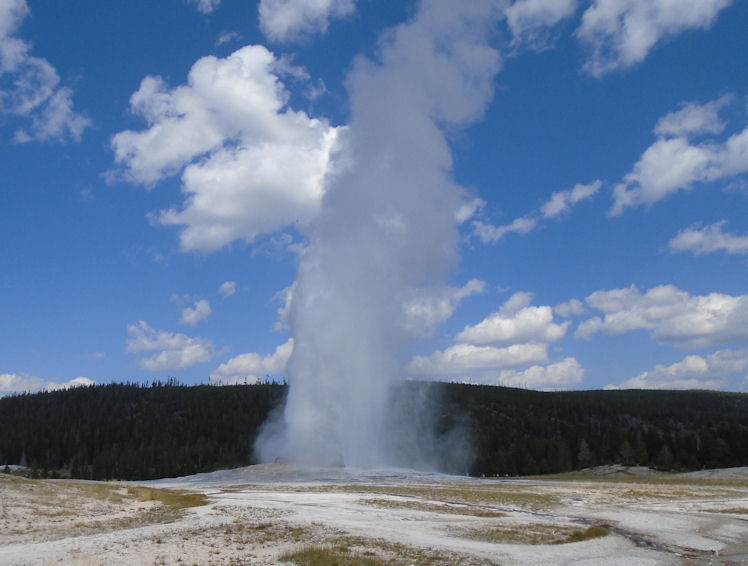
Yellowstone is very big and you can indeed find quiet spots away from the iconic sites. The picture below is the Yellowstone River.
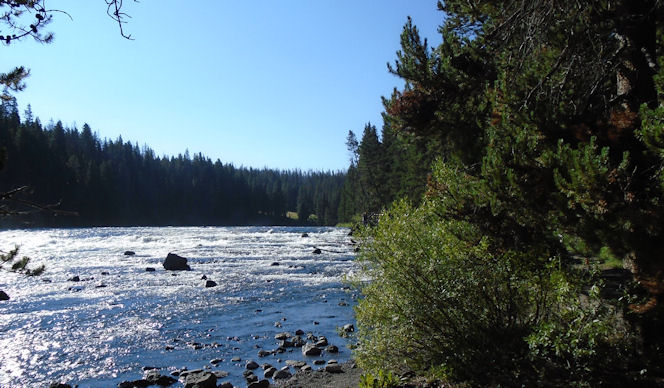
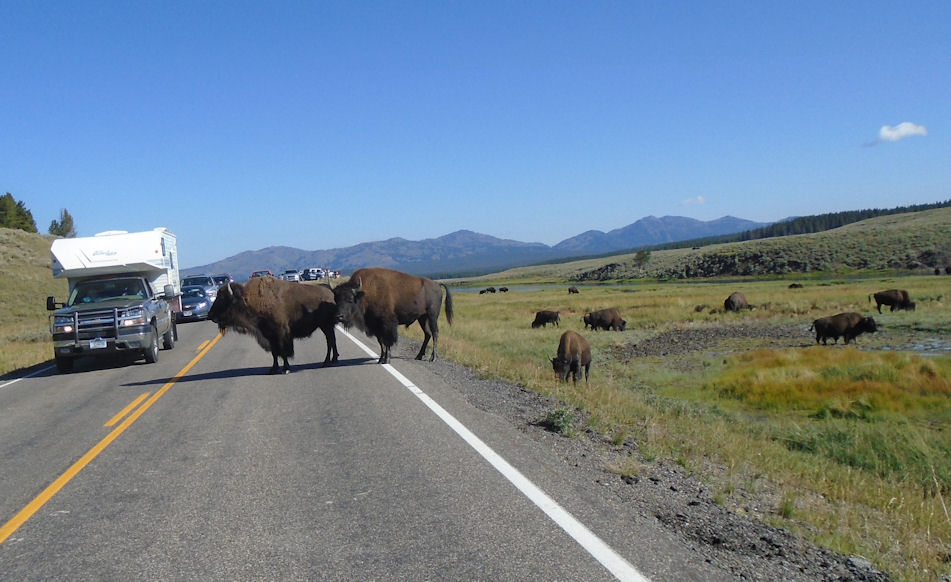
I had a lot of experience with national parks when I was a kid, but all my experience was through old View Master, those 3D viewers. Through them I went to Yellowstone many times. It was nice to see it in person. I felt I knew the place that i was seeing for the first time.

One things that the View Master didn’t convey was the closeness of the wildlife. The bison wandered onto the road and stopped traffic. You were not supposed to approach wildlife, but the wildlife did not follow the same rules.
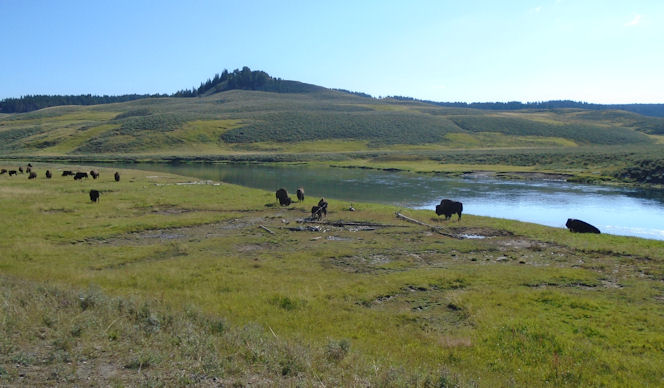
We saw lots of bison, no bears or elk and a few mule deer. I understand the bears are out in June & July but retreat into the back country after that. It is probably better to avoid the bears anyway.
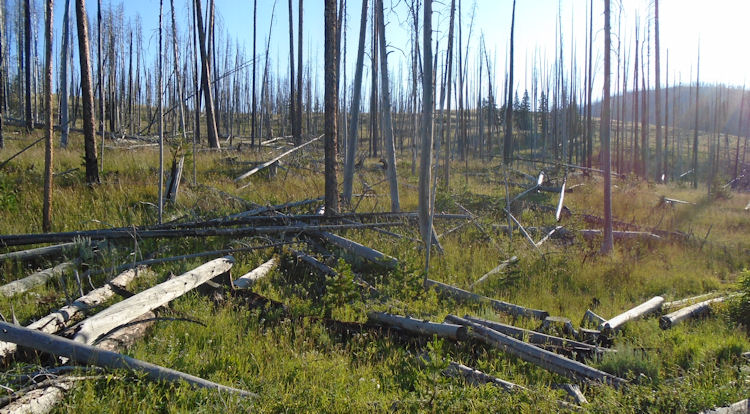
Yellowstone is the oldest of the national parks, founded in 1872. We drove in from the East Entrance. The area was burned in 2003 and is just recovering now. I guess it was a very hot and extensive fire. In Virginia, my loblolly pines planted in 2003 are big and robust. Things grow slower in the cooler mountain air in Yellowstone. They did not replant, depending on natural regeneration and I think there was a problem with seed source. I asked the rangers I met about the land, but I don’t think they really had all the information. If anybody knows more, I would appreciate the comments. You can see my loblolly in Virginia below. The land was clear cut in 2003.

Below is a Yellowstone forest that was burned in 1988. It is coming back thick. If we were managing this land for forestry, we would have replanted and thinned by now twice.
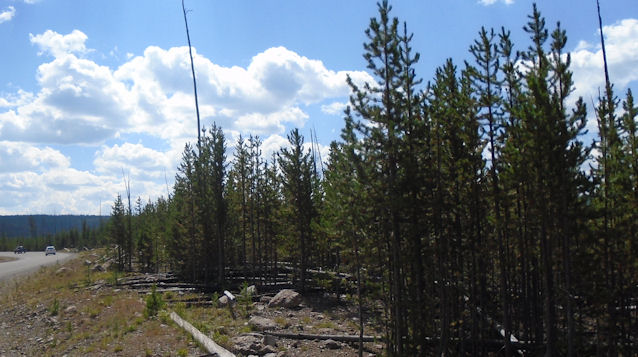
Of course, goals are different. As I wrote in an earlier post, we have a different – more complex and nuanced view of natural succession. When I learned ecology in the 1970s, we sort of believed that the forest was the goal. We would determine the “highest use” and judge anything not up to that as deficient. We now understand that every stage is similarly valuable. A burned (or cut) forests becomes a meadow, then a young forest, middle forest and maybe an old growth if it is around long enough. All the stages are attractive. There is no finish line. In a park like Yellowstone, they have time and are managing with nature. This means letting things sometimes burn.

On the way to Yellowstone, we went through the Big Horn National Forest. The mountains are interesting because of the great variety of biomes, among other reasons. One side of a mountain might be arid and sparse while the other side is verdant and forest covered.
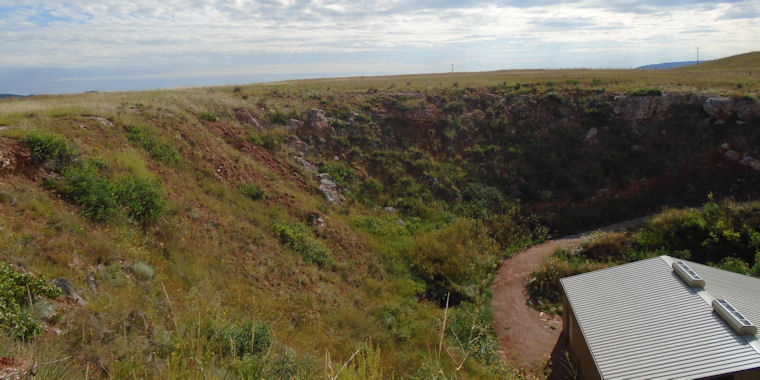
They found a sinkhole full of bison bones when they were building I-90 in Wyoming. They called in the archeologists and learned it was a “buffalo jump” where from around 1500 – 1800 native hunters drove buffalo off a cliff so that they could easily slaughter them. So they moved the highway a little and established a historical study archeologists from the University of Wyoming have been studying ever since.
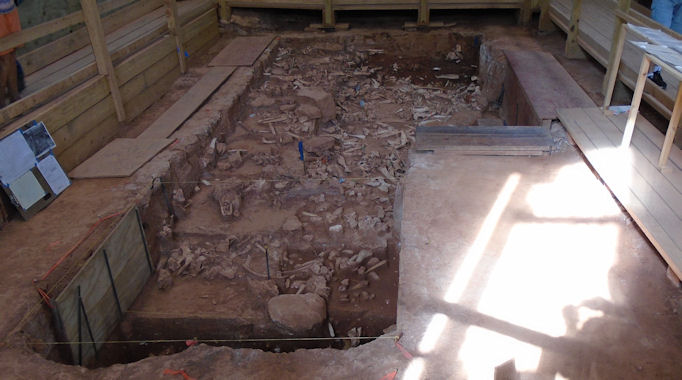
Before the Spanish introduced the horse into North America, life on the plains was hard. There is a lot of distance to cover on foot. The natives hunted bison, but could not hope to run them down. They could stampede them over a cliff, hence the buffalo jump. They stopped using the jumps around 1800 because that is the time when plains Indians started to really use horses. They could now hunt bison from horseback. Horses transformed life on the plains in many ways.
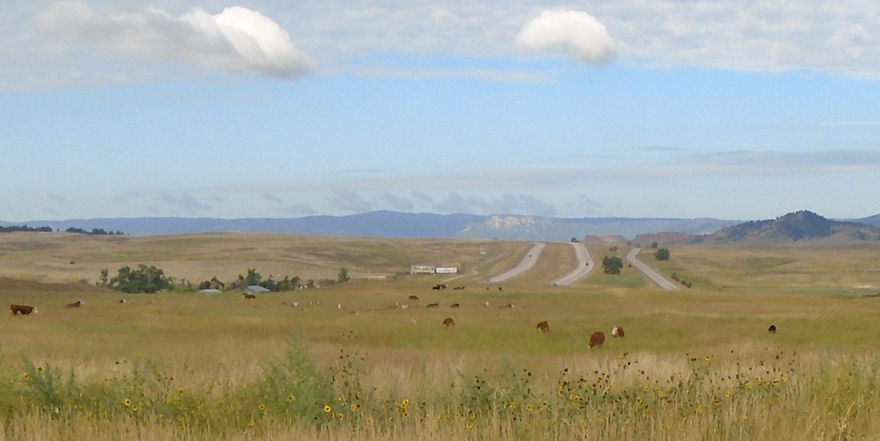
The tribes that learned to use horses had a big military advantage over those that did not and the horse people used their new mobility to carry out aggressive war against their neighbors – think the Huns or the Mongols. The societies Euro-Americans found when they came to the plains were completely different from what they would have found a couple centuries earlier and very new. I always think it is funny when we get maps of the “original” locations of tribes.
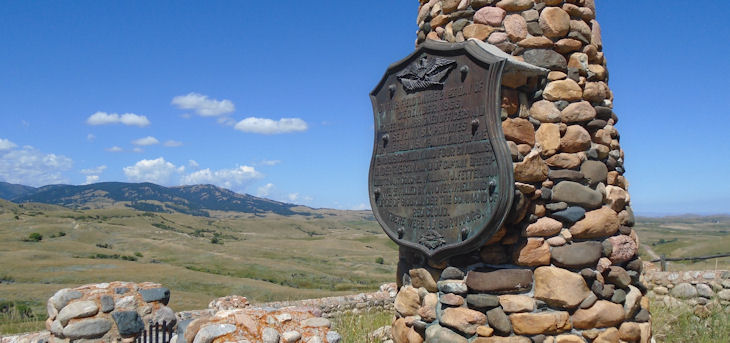
But when we think of Indian wars, we usually are not referring to the natives fighting each other, although that was constant. We are thinking of the cavalry, the cowboys & Indians. I-90 follows the old Bozeman trail where a lot of the action in the plains wars happened. Near the highway, for example, is the location of Fort Phil Kearny and the Fetterman massacre. Fort Phil Kearny was built to protect wagon trains on the Bozeman trail.
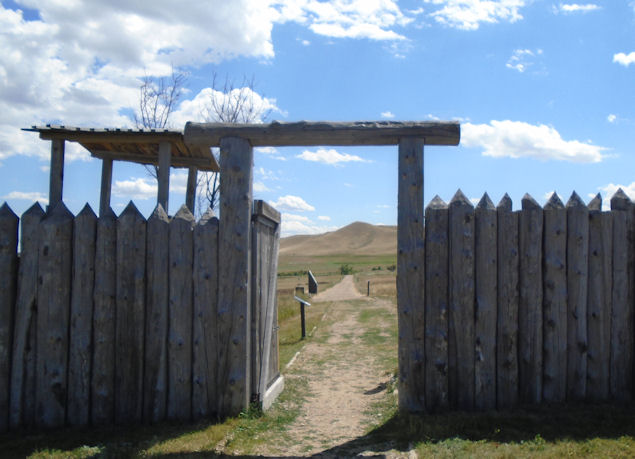
The native Sioux, Northern Cheyenne and Arapaho were unenthusiastic about the trail through their lands and the fort that protected it. They harassed the fort and on December 21, 1866 lured William J. Fetterman and 80 of his men into a trap. He thought he was chasing a few raiders and ran into more than 1000 warriors. It was the worst defeat of U.S. Army by native forces until the Custer massacre ten years later.
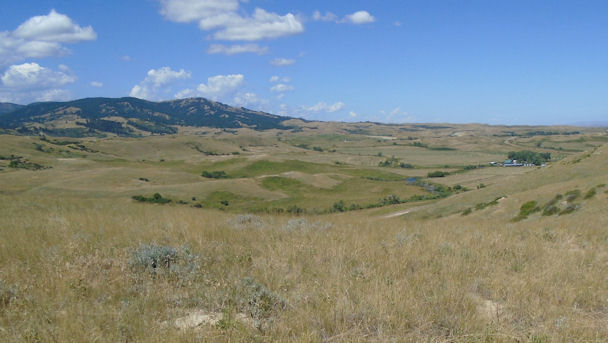
It seems like it would be hard to hide on the plains, but when I was walking around the Fetterman site, I noticed how things are just hard to see in the folds & contours. It is also hard to estimate distance. In other words, I can understand how those cavalry guys got tricked. Most were young men (the average age was 23). Some were Civil War veterans, but fighting conditions were really different in that war and in the East.

We were extremely lucky with the weather. There were big storms all around us, but we only saw it in the distance. It was an interesting picture, as you see above.

Instead of sticking to I-90, we took the scenic-slower route through the badlands. The badlands are rough. They are pretty to look at, but must have been hell to cross on foot. Being in a car on a paved road changes your perspective. They often have snake warning signs like the one below. I have only seen a rattlesnake one time in all the years I have walked in places with signs like this. Maybe they just put them there to spice up the experience.

You can see from the picture below that they even made a boardwalk along the hill. Again, your perspective is different when you can walk in comfort. The poor pioneers having to live here would have seen it differently.


You can’t even sit in a bar and get slowly drunk to the tones of a sad country song. The gambling machines are everywhere, even little monitors set into bars and tables. Who knew that Deadwood was a gambling mecca. All that I knew about it came from the Wild Bill Hickok legends and that series by the same name. I guess that it was a gambling center back then, but I assumed that it evolved.

Gambling, or now they like to call it gaming has become troublingly common. I don’t like it. It is not that I am puritanical. I think “vices” like drinking and card playing are okay. What I object to is the ubiquity and the inane variety.
Wild Bill played poker. Poker is a legitimate occupation. Those who are talented and develop their skill can win more than they lose. And we have to thank gamblers for the science of statistics. It was they (some at least) who cared enough to think through the mechanics of luck. Poker is also a social game. In the Old West it often had anti-social consequences, but at least you were playing with others.
Today’s gambling is mostly a lonely affair with a row of poor suckers growing soft in mind and body as they push a button on a flashing machines decked out in childish, sometimes even cartoon themes. It is a random process. You can never become good enough at pushing those buttons that you will routinely win more than you lose. You interact only with the machine, which has no memory or emotions but is programmed to let you win often enough that you feel you are making progress.
As I wrote above, I object not to gambling but to its ubiquity. And in quantity I think it is corrupting to individuals and society. I emphasize “in quantity” since I think a little is okay and useful fun. But when you get a lot of it, it gets bad. I don’t object so much to the fact that it parts some fools with their money, but rather that too much gambling instills a kind of fatalistic point of view where luck and superstition take on too much of a role in lives. It also fosters an over materialistic view. After all, the goal is the big win, n0t the satisfaction of a job well done to get y0u there.
I suppose my criticisms are those of an old curmudgeon. I just don’t like it and never really have. the hotel gave us $15 worth of credits to play. We lost that very rapidly and fled the frenetic scene.
I hope I have not too much insulted “gamers.” I know lots of people like it. I would just like less of it.
My picture up top shows Deadwood main street. The one below is a walking path. The ponderosa pines are the best part of the city. In the Black Hills, some of the pines are too dense and are being attacked by pine beetles. This is not new. The town of Deadwood got its name from a forest of dead wood that occupied the site way back in 1876. Pine beetles cannot be eradicated, but can be controlled by thinning and other silvicultural methods.

A big attraction along I-90 is the Corn Palace. It is not very far from the highway and so worth the short trip. The palace is an auditorium where they hold events and things like basketball games. The difference is that it is decorated with corn cobs and parts of corn plants. It is corny art, as you can see from the picture.

As you get toward the center of South Dakota, the land gets flatter and more barren. This is the short grass prairie where the pioneers had to make houses out of sod, since there was no wood. You can see below the great emptiness.

My pictures were taken near the Sinclair station. I liked the dinosaur when I was a kid. Below is an interesting sign. I wouldn’t think they would need to worry very much about parking.


We stopped for the night in Sioux Falls. It is a pleasant, medium-sized city. It was founded because of the waterfalls, as the name implies. It is not a very big river, but it was evidently enough to power grain mills.

There is a nice park where around the falls. There rocks were laid down millions of years ago, when the earth was much warmer and the middle of what is now North America was under a shallow, warm inland sea, as I learned from a plaque in the park.
Chrissy and I had supper at a place called “Monk’s House of Ale Repute” where they had craft beers. Like many such places, it was located in an old industrial building. These things appeal to people like us. It is as close to “cool” as we ever get or ever want to approach.